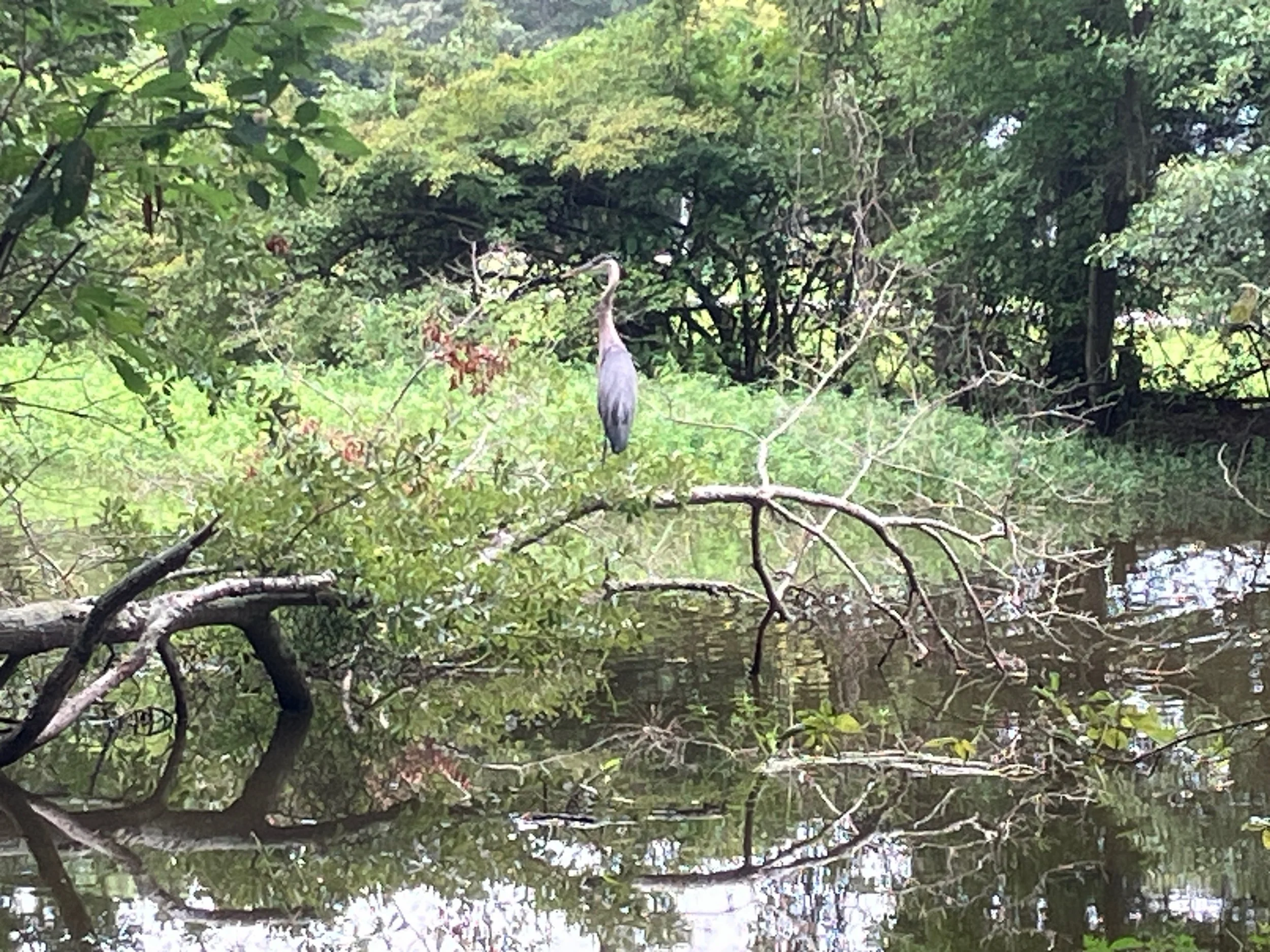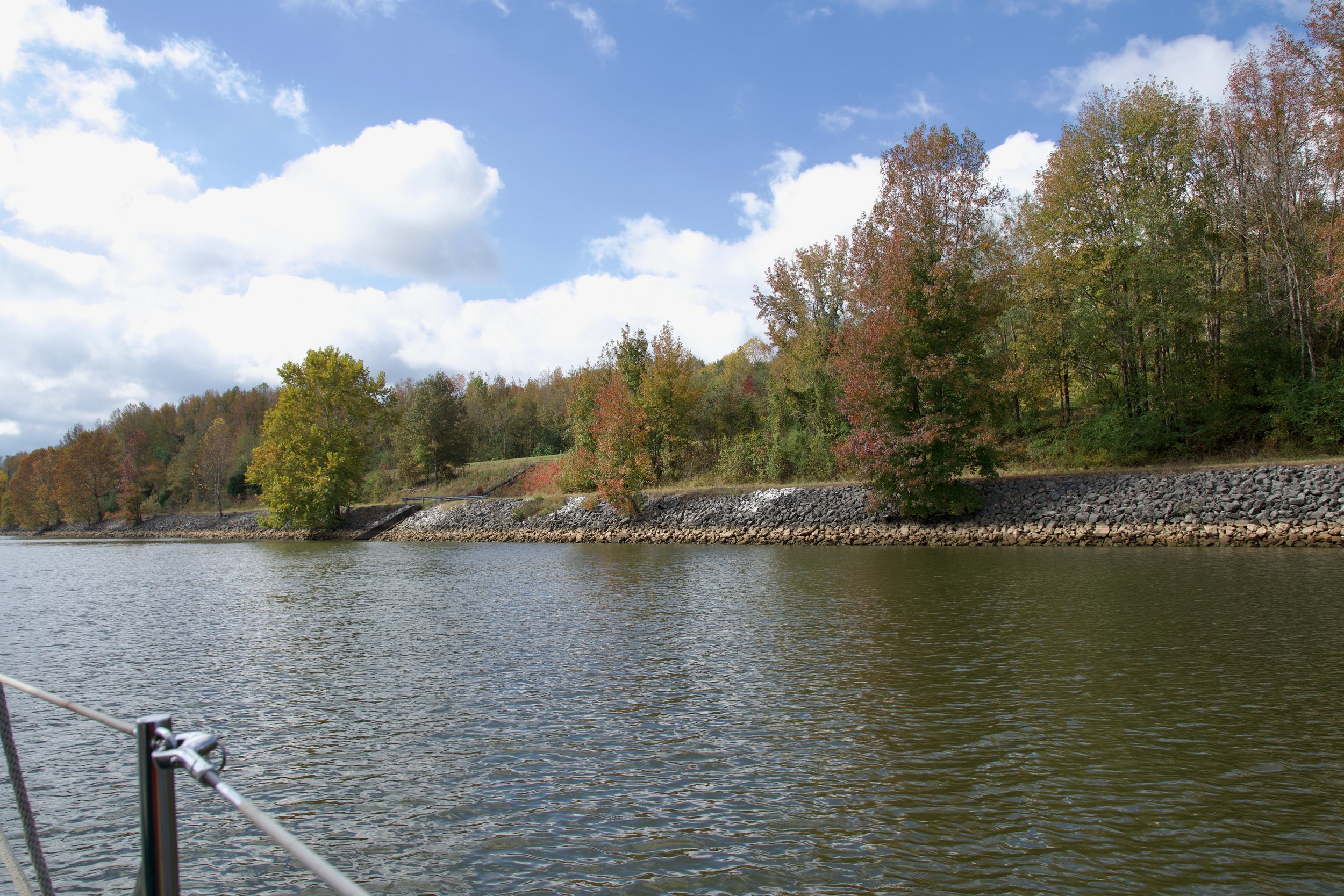Thoughts While Motoring
I’ve been mostly familiar with the middle section of the Tennessee River as it flows from east to west across north Alabama. Now I understand that it begins in the mountains of North Carolina and ends by flowing north across the flat land of west Tennessee. In the past two years, I’ve finally paid some attention to the story of the Tennessee Valley Authority and its impact on our area. Funny how you can grow up so close to something and still know little about it.
Oh, I had opportunities. As an engineer, my father was intrigued with the TVA dams in our area. When he drove us to Sumatanga for summer youth camps, we often stopped to admire the dam at Guntersville. I think I remember my folks going away for a romantic vacation to see Fontana dam. As David and I locked through Wheeler and Wilson dams on the Tennessee, I thought about how much Daddy would have enjoyed that experience, and been proud.
Now I am learning another waterway, the Tennesee-Tombigbee. So far most of its shores have looked much like any other southern riverbank to me. Ongoing lines of evergreen pines and rusty-looking deciduous trees, spotted with the bright clumps of trees showing off the Fall beauty of letting go. As we motor along, we can see where creeks and streams come down from higher ground and join the flow. Now and then we come to a wide place in the waterway, but not enough room to sail. In fact, we have only had one day so far when we actually got to enjoy the natural beauty of being powered by the wind. The Tennesee-Tombigbee is a long journey of motoring. Not our favorite activity.
We take turns at the helm, two or three hours at a time. That way the other one gets a chance to go below for warming up, getting something to eat, or resting. When you are the one driving, you have a lot of time to think. Between Pickwick Lake and Bay Springs Lake, there is a 29 mile passage called the Divide Cut. As a human-made waterway, its shoreline is quite different from natural riverbanks. I learned the large rocks covering the embankments to prevent erosion are called riprap. As I steered between two solid lines of riprap, I thought about rickrack, knickknacks, and Tictacs. When I shared with David over dinner he added riff-raff, bric a brac, paddywack (and dog bones) to the list.
Songs get stuck in your head in times like this. Since we first stayed on the boat in 2023, CSN’s Southern Cross has been my sailing theme song. Jimmy Buffett’s Breathe In, Breathe Out, Move On has helped us through some of the tough years waiting for the adventure to begin. I have no idea why other songs ring unbidden between my ears, like Easy Lover by Phil Collins. I wish it would not! But I do know exactly the reason I find myself singing the Police’s Roxanne. You see, we opted out of the marine toilet system that was on the boat originally. It had a holding tank that needed to be pumped out periodically at a marina with those facilities. Instead, we have a composting toilet, where the solid wastes are mixed with coconut husks and dried out, reducing any odor. The liquid waste flows into a container we call a pee jug, that can be emptied into any toilet on land. And the way you know the jug is nearly full is by a red signal light that comes on. Whenever that happens, we say we have “put on the red light.” We say we didn’t have to, but then, we kind of did.
We are meeting a lot of Loopers on this journey. As you may know, Loopers are members of America’s Great Loop Cruisers Association, who travel down our rivers to the Gulf in the Fall and spend the Winter in warmer climates, and then up the East Coast in the Spring to enjoy Summer in the Great Lakes. This is prime Looper season on the Tennessee-Tombigbee. We have heard that sailboats are becoming relatively scarce among Loopers, and we feel that out-of-the-ordinariness pretty starkly.
Each morning, the transient docks of the marinas empty of dozens of Looper power boats, who then cruise southward at 8 to 12 mph. A normal day for them might cover 50-100 miles, depending on the timing they encounter at the many locks that are slowly lowering us down to sea level. At the end of the day their ritual is “docktails” where new acquaintances gather, trade boat cards, and share stories.
We, on the other hand, motor at about 6 mph with our small sailboat engine, and cover about 20-30 miles a day. This would make no difference, except for those locks. Between each one, the power boats go quickly, and we fall behind. Much like cars traveling at different speeds all get caught at the same stoplight, so it is for us at the locks. And when there are two or three locks on one day’s trip, it is frustrating for them to wait for us, and no fun for us to slow everyone down.
We tend to show up at marinas about sundown, when the docktails have already been consumed. One time a group called to us and invited us to sit with them, saying they had questions for us. And the main question was “Why a sailboat?” I had no answer ready, and only realized hours later that the appropriate answer should have been, “Because we are sailors.” We are in no hurry; we are headed to the Gulf to go sailing, which is sometimes slow and usually quite peaceful. I’ve told David I am not doing this to make a loop, I’d rather go south and stay south, sailing.


